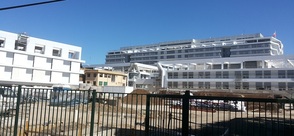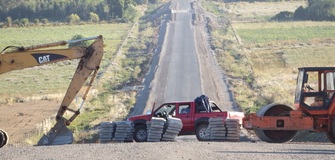CHILE UPDATES #28
The Summer of 2015 in Chile
The Summer of 2015 in Chile
It's the first week of February and summer is in full swing here in Chile. During this time of year the coast swells with activity as vacationers from the central valley flock to the more accessible beachside towns west of the Metropolitan Region.
Even though it's boom times on the central coast right now, the country's economy as a whole has definitely seen a slow down over the last 12 months as copper prices have dropped below $3.00USD/pound and the new government has promised to increase spending on education and raise taxes.
After several years of annual GDP growth in the 4% to 6% range and a relatively strong currency, growth dropped to less than 3% in 2014, the peso has been on a slide, and some analysts have started wondering if Chile's miracle economy might be a thing of the past.
But while you can't deny that a number of Chile's industries have faced some challenges over the last year, the idea that the entire country is in the doldrums and has lost all it's appeal is a far cry from the truth.
One of the most telling indicators of where this country is really headed is how the national debt has changed under the leadership of the new government.
You see, Chilean politicians are a rare breed in the sense that when they make financial promises, instead of just factoring in more expenses and assuming someone else down the road will have to figure out how to pay for them, they actually take steps to figure out where the money will come from (this tends to be the case for both liberal and conservative Chilean politicians).
In all of my travels around North America, Europe, Latin America, and Africa, this kind of foresight and responsibility among politicans is EXTREMELY hard to find and I believe will continue to make Chile one of the most stable jursidictions around the world in regards to rule of law, property rights, and general respect for it's citizens and residents.
Apart from these longer term macro trends, I'd bet you'd also be surprised to see what's been happening in some emerging areas of the country's central regions recently.
After several years of annual GDP growth in the 4% to 6% range and a relatively strong currency, growth dropped to less than 3% in 2014, the peso has been on a slide, and some analysts have started wondering if Chile's miracle economy might be a thing of the past.
But while you can't deny that a number of Chile's industries have faced some challenges over the last year, the idea that the entire country is in the doldrums and has lost all it's appeal is a far cry from the truth.
One of the most telling indicators of where this country is really headed is how the national debt has changed under the leadership of the new government.
You see, Chilean politicians are a rare breed in the sense that when they make financial promises, instead of just factoring in more expenses and assuming someone else down the road will have to figure out how to pay for them, they actually take steps to figure out where the money will come from (this tends to be the case for both liberal and conservative Chilean politicians).
In all of my travels around North America, Europe, Latin America, and Africa, this kind of foresight and responsibility among politicans is EXTREMELY hard to find and I believe will continue to make Chile one of the most stable jursidictions around the world in regards to rule of law, property rights, and general respect for it's citizens and residents.
Apart from these longer term macro trends, I'd bet you'd also be surprised to see what's been happening in some emerging areas of the country's central regions recently.
Here in Chile's 7th Region where the local economy is primarily focused on agriculture and forestry (two industries which have been doing quite well over the last several years), foreign and national investment dollars are still flooding into new businesses, real estate, and infrastructure.
From new hospitals and shopping centers to hydroelectric power stations to paved coastal highways, the amount of development in this part of the country is absolutely astounding.
From new hospitals and shopping centers to hydroelectric power stations to paved coastal highways, the amount of development in this part of the country is absolutely astounding.
I can see why those with a limited grasp of the Chilean economy might try to claim that the country as a whole has stagnated after reading a few financial headlines or speaking with a couple mining executives.
For those of us who know how to read between the headlines or actually spend significant time on the ground here, it's clear there will be plenty more good times ahead even after this year's Chilean summer is long gone.
For those of us who know how to read between the headlines or actually spend significant time on the ground here, it's clear there will be plenty more good times ahead even after this year's Chilean summer is long gone.




